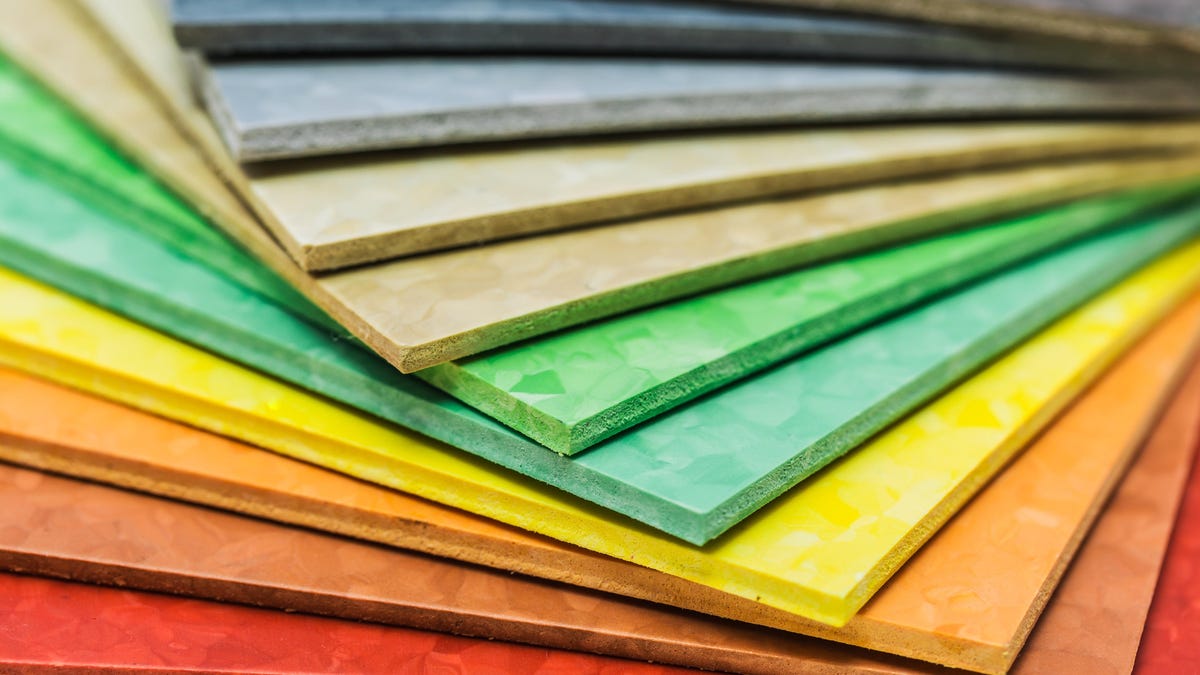The Difference Between Linoleum and Vinyl Flooring
Although linoleum and vinyl flooring may seem like they’re the same thing, they’re actually pretty different in terms of cost, durability, ease of installation, and a variety of other factors. That’s why it’s important to know the pros and...


Photo: Fishman64 (Shutterstock)
Although linoleum and vinyl flooring may seem like they’re the same thing, they’re actually pretty different in terms of cost, durability, ease of installation, and a variety of other factors. That’s why it’s important to know the pros and cons of each type of flooring before deciding which to install in your home. Here’s what to know about the differences between linoleum and vinyl flooring.
The difference between linoleum and vinyl flooring
In order to determine whether linoleum or vinyl flooring is right for a particular room in your home, it’s helpful to know how the materials differ. Here’s some background on each:
Linoleum
Invented in 1860Though modern synthetic versions are available, traditional linoleum is made from all-natural and biodegradable materials, including linseed oil, pine rosin, limestone, cork flour, wood flour, and juteSheet linoleum costs between $5 and $7 per square footLinoleum tiles cost between $3 and $5 per square footLasts an average of 20 to 40 yearsMore rigid and difficult to cut than vinyl, but also more durableWater resistant, but more susceptible to water damage than vinylNeeds to be sealed every three to 10 years to stay water resistantMore heat resistant than vinylNatural linoleum doesn’t contain any volatile organic compounds (VOCs)Vinyl flooring
Invented in the 1920sSynthetic; made primarily of polyvinyl chloride (PVC) resinSheet vinyl costs between 50 cents and $2 per square footVinyl tiles cost around $3.50 per square footLasts between 10 and 20 yearsWaterproof; resistant to mold and mildew buildupAvailable in more colors and patterns than linoleumMore flexible and easier to cut than linoleumEasier to install than linoleum
How to decide which flooring to use
So which flooring should you choose? Both are easy to clean and popular choices for kitchens and bathrooms. If you have a bathroom with poor ventilation that tends to get extra humid, vinyl might be a better option because it’s waterproof. Linoleum, on the other hand, is more heat-resistant, so might be a better choice for a kitchen.
When considering cost, think about whether you’re more interested in saving money upfront (in which case, vinyl wins) or in the long-term (linoleum comes out on top there). And although technically, you can install both linoleum and vinyl yourself, vinyl flooring is much easier for less-experienced DIYers.

 JaneWalter
JaneWalter 





























![Are You Still Optimizing for Rankings? AI Search May Not Care. [Webinar] via @sejournal, @hethr_campbell](https://www.searchenginejournal.com/wp-content/uploads/2025/06/1-1-307.png)

